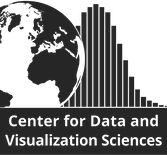The options for mapping spatial data continue to grow, but it is often difficult to evaluate the appropriateness of a given mapping tool for a research project. This matrix compares four popular mapping tools on a set of nine criteria to help choose the appropriate mapper for a project.
| GeoCommons | Google Fusion Tables | Tableau | ArcGIS | |
| Ease of Use | Easy, but clean data before upload | Intermediate, mapping and dataset merging can require some effort | Easy. Data manipulation possible within program | Intermediate. Clean data needed, and there's a learning curve, but lots of assistance, guides and flexibility |
| Description | Online mapping of user-generated data. Variety of user-created data and maps to which data may be appended. | Online visualization of user-generated data. User-created data available for merging. | Desktop and online mapping and visualization of user-generated data | Desktop mapping of user-generated data. Online sharing possible through ArcGIS Online. |
| URL | http://geocommons.com | Desktop based (except ArcGIS Online) | ||
| File Types | CSV files, shapefiles, KML, RSS, ATOM, GeoRSS | Excel spreadsheets, CSV files, delimited text files, KML files | Excel, Access, text files, plus a variety of connections to data soruces with Tableau Professional | Map formats: shapefiles, layers, map packages and others Data formats: Excel, delimited text, Access database |
| Web Services | Live data from WMS and Tile services, as well as from Oracle, MySQL, PostresSQL, MongroDB, and HBase-based datasets | API available for use with web interfaces, other services | OData, Windows Azure Marketplace | ArcGIS Online Map services, basemap service (Esri) |
| Visuals | Maps, basic charts | Maps, heat maps, variety of charts | Maps, basic charts | Maps, basic charts |
| Geocoding | Geocoding of addresses, joining other geographies to existing boundary files (US counties, etc.) | Geocoding to limited set of geographies (cities, states, nation-states, etc.) Manual geocoding by joining data to existing KML definition of geographies * NOTE: Refer to standard codes to join to states, etc. Geocoding to addresses (best results include address, city, state and ZIP in one column) Geocoding to lat/lng coordinates |
Area codes, FIPS codes, county/state/country names, ZIP codes, ISO country codes and others. Latitude/longitude pairs also possible. Address must be geocoded in another program | Geocoding of addresses, joining data to boundary files (US counties, etc.) |
| Sharing | Web link, permissions can allow others to edit or restrict viewing | Embeddable code for HTML, sharing to specific users or entire world via Google Docs (including permission levels to edit for specific users) | Embeddalbe code for HTML, sharing via link to Tableau Software server | ArcGIS online, export images, KML files |
| Other Notes | Capability to produce new data from existing data (for example, turning raw counts of employment and manufacturing employment into a proportion) Clipping, intersections, distance filtering, buffers and many other tools are also available Easy to use, but error messages can be difficult to interpret IE seems to hang at times. Firefox works fine. |
Very useful when filters (for particular years, states, etc.) are needed. Produces attractive graphs, nice maps if you don't need custom work KML boundaries for counties and other common geographies are available for use with your data. Create and upload a KML for less common geographies. |
Very easily and intuitive, imagine Excel with display of geographic data as easily displayed
BatchGeo can be used to geocode address prior to import into Tableau |
With patience, this is the best tool to build customized maps. Multiple methods to categorize observations & perform analyses
See this guide for an overview of ArcGIS 10
|

